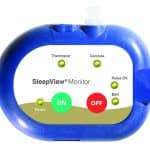Summary: The National Transportation Safety Board says a deckhand of the Cindy B fell asleep at the helm just before 6 am. The deckhand had recently transitioned to a night watch schedule.
Key Takeaways:
- Impact of Shift Transition and Circadian Rhythms: The deckhand had recently transitioned to a night shift, putting him at a low point in his circadian rhythm just before 6 am. This period of vulnerability is known to increase the likelihood of sleep-related incidents.
- Ineffectiveness of Self-Assessing Sleepiness: Despite the deckhand’s claim of not feeling tired, he fell asleep at the helm. This incident highlights that self-assessment of sleepiness is unreliable and underscores the need for objective sleepiness monitoring.
- Necessity of Proper Rest and Shift Management: The report emphasizes that shift workers should be given adequate rest, particularly when adjusting to new schedules. Sleep-related risk can be reduced by extending downtime between shifts and properly managing sleep schedules.
The National Transportation Safety Board (NTSB) recently published its accident report on the contact of Cindy B tow with a dock in Oregon, which highlights how shift work and sleep deprivation played a significant role in the accident. The deckhand, responsible for navigating the vessel during a night shift, fell asleep at the helm. This occurred just before 6 am. The investigation revealed that the deckhand had been transitioning to night shifts.
The probable cause of the contact of the Cindy B tow with the Port Westward Beaver Dock, according to the NTSB, was deckhand 1 falling asleep at the helm, which occurred during a night watch, at a low point in his circadian rhythm, and following a change in his awake/sleep cycle. Contributing to the casualty was the pilothouse alerter system not alarming to wake the incapacitated deckhand at the helm because a swinging radio microphone in the motion sensors’ field of view defeated the system.
Cindy B Accident Details
A little after 5:30 am, the Cindy B’s captain asked deckhand 1 to take the helm while the captain used the lavatory. After using the lavatory, the captain stopped in the galley to make coffee; deckhand 1 remained at the helm in the wheelhouse.
Deckhand 1 later described what had happened: while steering the vessel, “I started leaning forward and then I—that’s about all I remember … I sort of just fell asleep.” He woke when the barge struck the dock. In the galley, the captain felt the tow strike the dock. He returned to the wheelhouse, where he found the deckhand confused and groggy. He took over the helm from the deckhand and maneuvered the vessel out of the causeway wreckage.
The Cindy B accident caused about $6 million in damages and no injuries.
Deckhand’s Sleep
Although deckhand 1’s watch rotation ended at 6 pm on November 10, work/rest records indicate that he continued on watch until about 8 pm. According to the work/rest records, deckhand 1 slept for about 4 hours, then came back on watch at midnight on November 11 as the tow continued upbound on the river. After his night (midnight to 6 am) watch, he slept for about 5 hours. He slept for another 5 hours after his day (12 pm-6 pm) watch before returning to watch at midnight on Nov 12. The accident happened at 5:52 am on Nov 12.
During his most recent merchant mariner medical exam, deckhand 1 indicated that he did not have any sleep problems such as obstructive sleep apnea, narcolepsy, or shift work disorder.
Deckhand 1 also stated that he did not feel tired before he fell asleep; however, research has shown that self-assessment of sleepiness is problematic.
The deckhand’s alcohol and drugs test results were negative for all tested-for substances.
Lessons Learned from the Cindy B Accident
According to the NTSB report,”Disturbances in awake/sleep cycles caused by transitioning from daytime to nighttime watches or shifts result in increased accidents and occupational mistakes. Although the impacts of these awake/sleep cycle disturbances cannot be fully mitigated, they can be reduced by tools such as pilothouse alerter systems and by allowing longer downtime between watches/shifts.”
To mitigate the risk of such accidents, the report suggests that employers must ensure that shift workers, especially those transitioning to night work, have adequate time to adjust their sleep schedules. Additionally, the implementation of alertness monitoring systems, such as pilothouse alerters, was highlighted as a potential safety measure. These systems can detect when a person at the helm becomes unresponsive and activate alarms to alert the crew before a critical error occurs.
In industries like maritime transportation, where shift work is common, education and training programs focused on managing sleep schedules and understanding the effects of circadian rhythms could significantly reduce sleepiness-related risks.
ID 28940179 © Welcomia | Dreamstime.com









